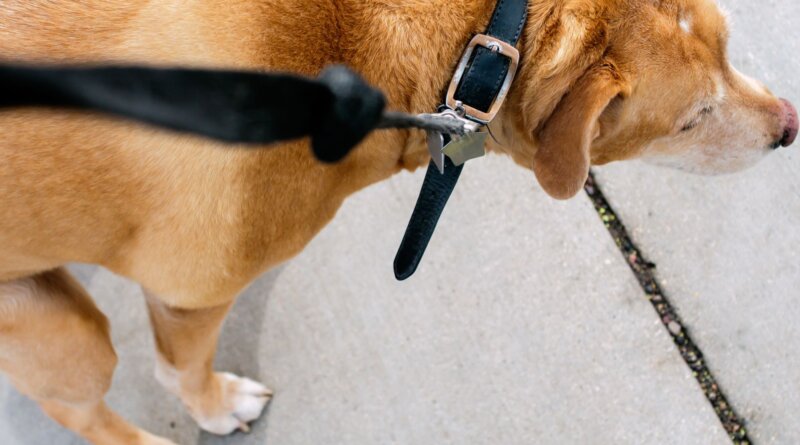Dietary Fiber for Dogs – Whole Dog Journal
Dogs cannot digest dietary fiber; as they lack the digestive enzymes needed to break the chemical bonds present in these compounds. Nevertheless, when fed at the proper quantity in the form of a good dietary source of fiber or a fiber supplement, this indigestible material can have a positive impact on your dog’s microbiome, gut health, and stool quality. Dietary fiber can:
- Slow gastric emptying (helpful for dogs suffering from loose stools or diarrhea)
- Add bulk to the diet of a dog who needs to lose weight
- Provide benefits that selectively favor the growth and/or activity of the gut’s native beneficial bacteria species, which in turn:
- produce short chain fatty acids, which
- help maintain intestinal electrolyte and fluid balance
- inhibit the growth of pathogenic microbes
- provide an energy source for intestinal cell function and replication
There are two types of dietary fiber, fermentable fiber (also known as soluble fiber) and nonfermentable fiber (also known as insoluble fiber).
Fermentable fiber
Fermentable fiber cannot be broken down by the dog and passes through the small intestine largely unchanged by digestion. When fermentable fiber reaches the large intestine, the bacteria that reside therein chemically breaks it down and uses it as a food source. These bacteria produce short chain fatty acids, which are the preferred form of energy for our pet’s colon cells. These short chain fatty acids are absorbed by the intestines and help to promote a healthy gut by providing an energy source for cellular function and replication.1
Short chain fatty acids also help to prevent diarrhea in dogs by maintaining intestinal electrolyte and fluid balance, enhancing the absorption of sodium, promoting the growth of beneficial intestinal microflora, and inhibiting the growth of pathogenic microbes. Dogs who consume diets containing fermentable fiber have increased colon weights and increased intestinal surface area compared to dogs fed diets containing nonfermentable fiber. The result? Dogs fed a diet containing fermentable fibers have greater potential for water absorption than those not fed fermentable fibers.2
The major sources of fermentable fiber used in commercial canine diets include cereal grains, legumes, and other plant ingredients such as beet pulp and rice bran. These soluble fibers also have the capacity for binding to water, which can increase the viscosity of the intestinal contents, slowing gastric emptying. This is especially helpful for dogs suffering from loose stools or diarrhea, as these soluble fibers in the diet can help bind the excess water present in the intestines.1
Some fermentable fibers also act as prebiotics – food ingredients that provide benefits by selectively favoring the growth and/or activity of the native beneficial bacteria species (such as Bifidobacterium and lactobacilli) that reside within the colon of the host animal. Prebiotics impact the gut microbiome by acting as a food source for these beneficial bacterial colonies within the dog’s intestinal tract.1
Providing prebiotic fiber in conjunction with probiotics (beneficial bacterial species fed to the dog in the form of dietary supplements) helps to ensure that the beneficial bacteria you are supplementing your pet with have everything they need to thrive. Inulin is commonly used as a prebiotic fiber supplement in diets and is typically sourced from chicory root. Other varieties of prebiotics can be found naturally in ingredients such as fruits, vegetables, grains, psyllium, and sugar beet root.1,2
While fermentable fiber is an important factor for the maintenance of gut health in your dog, the amount and type of fermentable fiber should be considered, as large amounts have the potential to cause digestive upset. One of the byproducts of bacterial fermentation is gas, meaning that too much highly fermentable fiber can be the cause of flatulence and stomach discomfort. Because of this, moderately fermentable fibers, such as beet pulp or rice bran, are preferrable to highly fermentable fibers like pectin and guar gum. Other fibers, such as cellulose, locust bean gum, and xanthium gum, have very low fermentability and are less likely to cause excess gas production but are also less effective for the production of short chain fatty acids.2
Nonfermentable or insoluble fiber
Nonfermentable carbohydrates, or insoluble fiber, is comprised of the non-digestible components of plants (such as cellulose) that are not easily fermented by intestinal microbiota. This type of fiber is also termed bulk fiber, as it helps with stool bulking when added to the diet. This type of fiber is especially useful when considering foods for dogs who are overweight or who gain weight easily, as insoluble fiber provides bulk to the diet without adding calories. Insoluble fiber also helps to normalize intestinal transit rate and can help bind water and toxins in the intestinal tract.
Sources of insoluble fiber include beet pulp, fruit and vegetable pomaces, bran, and cellulose.1
Adding fiber to your dog’s diet
There are many options available to owners who would like to increase the fiber content of their dog’s diets – most typically, in an effort to control a dog’s chronic diarrhea or constipation. You can purchase commercial supplements and treats that provide your pet with additional dietary fiber. For pre-biotic supplementation, look for products containing inulin. While you can add a variety of raw plant ingredients to the diet to add bulk fiber to the diet, many dogs find these to be unpalatable, leading people to search for tastier alternatives.
Many fiber sources contain both fermentable and nonfermentable fibers, providing the benefits of both. Remember that many commercial foods already contain fiber, so be careful not to over supplement, as too much fiber can cause diarrhea or constipation in dogs whose stools are healthy. Additionally, any supplementation of fiber should be done gradually to allow your dog’s digestive system time to adjust. If you have any questions or concerns regarding supplementing your dog’s diet with fiber, be sure to consult your veterinarian.
References:
- Nutrient requirements of dogs and cats. (2018). The National Academies Press.
- Case, L. P., Daristotle, L., Hayek, M. G., & Raasch, M. F. (2011).Canine and Feline Nutrition: A resource for companion animal professionals. Mosby.




